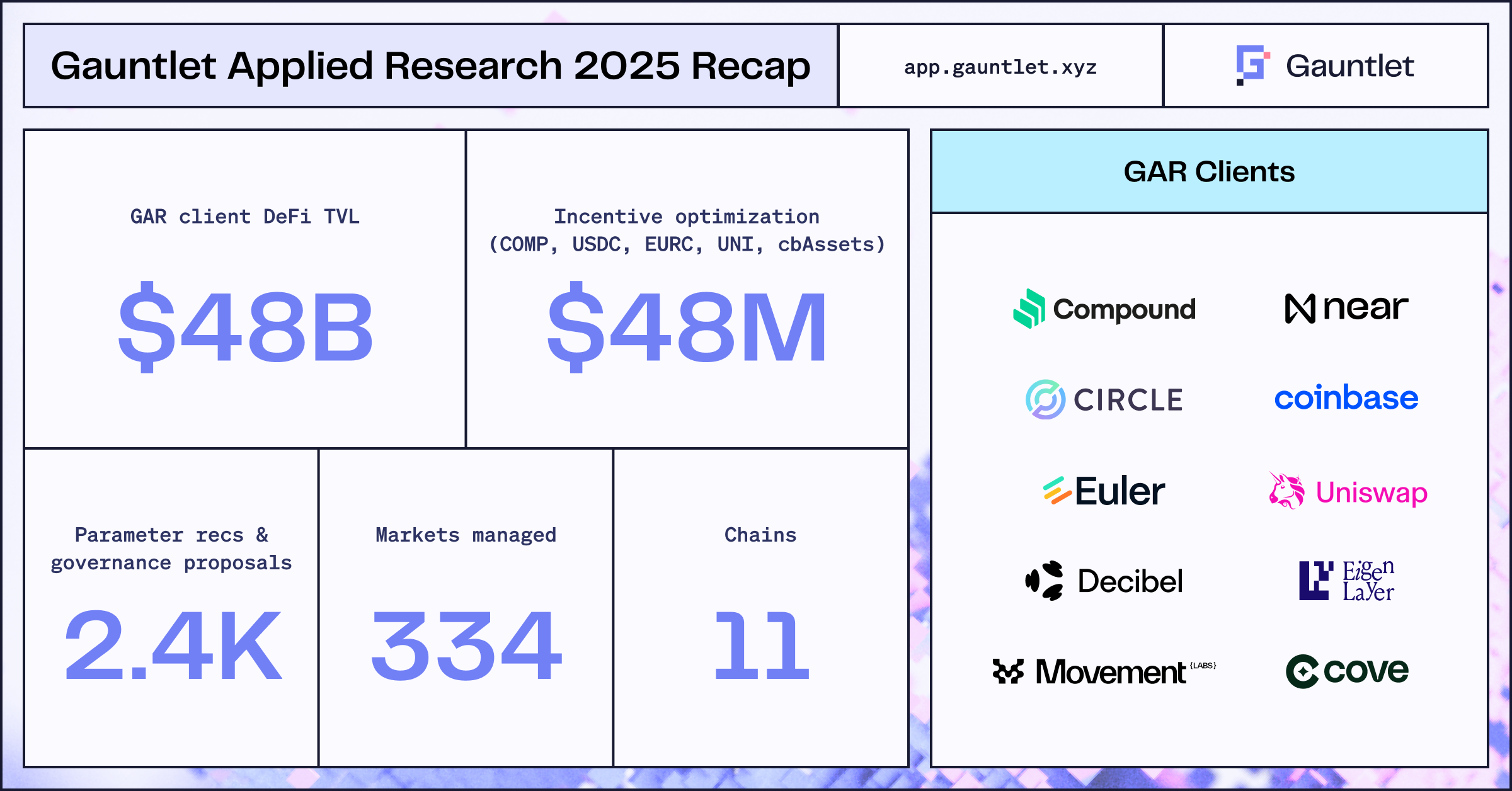The Market Risk Cycle
Over the last five years, Gauntlet has managed risk for DeFi protocols through all phases of the market cycle. Our long-term partnerships have given us a unique perspective on how successful protocols optimize risk and safely capitalize on opportunities. While overlooked risks may be realized quickly, it usually takes time for sound risk management practices to pay off. Excessive risk-taking may seem healthy in a bull market, but prove fragile later on when market conditions are less favorable. On the other hand, overly conservative protocols may seem strong in a market drawdown, but fall out of favor when others are producing better returns.
We have observed that the most successful protocols maintain a consistent, balanced risk management process throughout market cycles. This moderate approach has given market leaders a stable ground to continue innovating on protocol features and scaling across new chains and use cases. Operating a protocol at a prudent risk tolerance is an important element of long-term success, but this alone is not enough. The most successful protocols have stayed ahead of the competition by maintaining a healthy risk profile while also pushing the boundaries of functionality and efficiency. To achieve this level of performance, protocol developers and risk managers need to work in close coordination to capture opportunities, mitigate emerging risks, and safely deploy new features.
Navigating the Tradeoffs
Risk management is not 1-dimensional — most decisions involve tradeoffs between protocol objectives in either risk or efficiency. Two configurations with the same level of risk are not equivalent in general, as one may be more efficient than the other. For example, if a protocol optimizes collateral ratios but does not optimize interest rates, it may face a higher risk of excessive borrow usage, which could hinder liquidation mechanics. To stay within its risk tolerance, this protocol may lean more conservative with collateral ratios. However, it would struggle to compete with a similar protocol that optimizes interest rates and can thus offer a higher collateral ratio without added risk.

Another way protocols can improve their overall risk profile is through advanced features that enable more granular optimization. For example, the introduction of Isolation Mode and eMode in Aave v3 provided ways to better manage riskier assets and achieve higher efficiency than the v2 protocol. These innovations allowed Aave to push the boundary of performance beyond what was possible previously. While a better design still has tradeoffs, there are higher-quality options to choose from in the set of available protocol configurations.
Optimizing parameters holistically allows a protocol to reach maximum efficiency, given its level of risk tolerance, which is the overarching goal of risk management. Our job at Gauntlet is to do just that — assess how a protocol can fully maximize its efficiency without putting itself at outsized risk during a downturn. We aim to help all our risk clients consistently improve their risk-reward profile while maintaining a sustainable balance to endure through many market cycles in the future.
Blog
View the full presentation
Read the full paper









